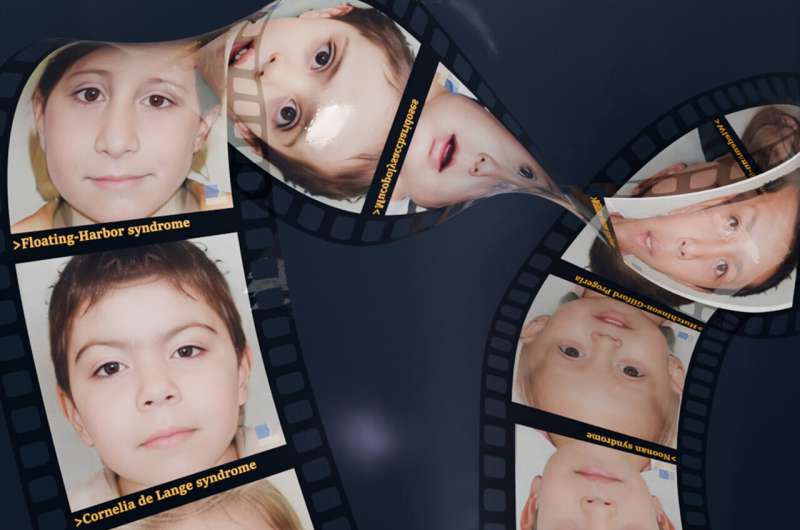This article has been reviewed according to Science X's editorial process and policies. Editors have highlighted the following attributes while ensuring the content's credibility:
fact-checked
peer-reviewed publication
trusted source
proofread
Genetic diagnostics of ultra-rare diseases: Large multicenter study identifies 34 new genetic diseases

The majority of rare diseases have a genetic cause. The underlying genetic alteration can be found more and more easily, for example, by means of exome sequencing (ES), leading to a molecular genetic diagnosis. ES is an examination of all sections of our genetic material (DNA) that code for proteins. As part of a Germany-wide multicenter study, ES data was collected from 1,577 patients and systematically evaluated.
This made it possible to diagnose a total of 499 patients, with 34 patients showing new, previously unknown genetic diseases. The study thus makes a significant contribution to the initial description of new diseases. In addition, software based on the use of artificial intelligence (AI) was used for the first time on a broad scale to support clinical diagnosis. '
The "GestaltMatcher" AI system can assist in the assessment of facial features with regard to the classification of congenital genetic syndromes. The results of the study, in which 16 university locations were involved, have been published in Nature Genetics.
Ultra-rare diseases require both multidisciplinary clinical expertise and comprehensive genetic diagnostics for optimal care. The three-year TRANSLATE NAMSE innovation fund project began at the end of 2017 with the aim of improving the care of those affected by means of modern diagnostic concepts.
Researchers from 16 university hospitals analyzed the ES data of 1,577 patients, including 1,309 children, who presented to rare disease centers as part of TRANSLATE NAMSE. The aim of the project was to find the cause of the disease in as many patients as possible using innovative examination methods.
A genetic cause of the rare disease was identified in 499 patients, 425 of whom were children. In total, the researchers found changes in 370 different genes.
"We are particularly proud of the discovery of 34 new molecular diseases, which is a great example of knowledge-generating patient care at university hospitals," says Dr. Theresa Brunet, one of the lead authors from the Institute of Human Genetics at the Klinikum rechts der Isar of the Technical University of Munich.
What happens next with the unsolved cases?
"We will examine the affected patients for whom we have not yet been able to find a diagnosis as part of the model project Genome Sequencing, or MVGenomSeq for short," says Dr. Tobias Haack, Deputy Director of the Institute of Medical Genetics and Applied Genomics at the University Hospital of Tübingen.
The MVGenomSeq builds on the success of the TRANSLATE NAMSE project and enables the analysis of clinical genomes at university hospitals throughout Germany. Unsolved cases can also be investigated in follow-up studies using new examination methods, such as long-read sequencing, which allows much longer DNA fragments to be analyzed.
"Long-read sequencing enables us to find genetic changes that are difficult to detect and we assume that we will be able to make further diagnoses using this method," says Dr. Nadja Ehmke, Head of Genome Diagnostics at Charité's Institute of Medical Genetics and Human Genetics and one of the last authors.
As part of the TRANSLATE NAMSE project, standardized procedures for extended genetic diagnostics for suspected rare diseases were also established at the participating rare disease centers, based on interdisciplinary case conferences. These were incorporated into standard care after the project was completed.
"The interdisciplinary case conferences play an important role for those affected. This enables a comprehensive clinical characterization, which is relevant for the phenotype-based evaluation of the genetic data. In addition, the detected variants can be discussed in an interdisciplinary context," says Dr. Magdalena Danyel, one of the first authors, who works as a specialist at the Institute of Medical Genetics and Human Genetics and a fellow of the Clinician Scientist Program of the Berlin Institute of Health (BIH) at Charité—Universitätsmedizin.
Rare genetic diseases can sometimes be recognized by the face
The researchers also investigated whether the supplementary use of machine learning and artificial intelligence (AI) tools improves diagnostic effectiveness and efficiency.
To this end, the "GestaltMatcher" software developed by researchers in Bonn, which uses computer-assisted facial analysis to support the person using it in the diagnosis of rare diseases, was tested on a broad scale for the first time.
The study used the sequence and image data of 224 people who had also consented to the computer-assisted analysis of their facial images, and it was shown that the AI-supported technology provides a clinical benefit.
The GestaltMatcher AI can recognize abnormalities in the face and assign them to specific diseases. An important question when assessing genetic data is: Does the phenotype match the genotype? The AI can provide support here.
"GestaltMatcher is like an expert opinion that we can provide to any medical professional in a matter of seconds. Early diagnosis is essential for those affected by rare diseases and their families. Supportive use of the software by pediatricians could already be useful in the case of abnormalities during the U7 screening at 21 to 24 months or U7a at 34 to 36 months," says corresponding author Prof. Peter Krawitz, Director of the Institute for Genomic Statistics and Bioinformatics (IGSB) at the University Hospital Bonn (UKB), where the GestaltMatcher AI is being developed.
Prof. Krawitz is also a member of the Cluster of Excellence ImmunoSensation2 and in the Transdisciplinary Research Areas (TRA) "Modeling" and "Life & Health" at the University of Bonn. The software and app can be made available to all doctors through the non-profit organization Arbeitsgemeinschaft für Gen-Diagnostik e.V. (AGD).
More information: Axel Schmidt et al, Next-generation phenotyping integrated in a national framework for patients with ultrarare disorders improves genetic diagnostics and yields new molecular findings, Nature Genetics (2024). DOI: 10.1038/s41588-024-01836-1



















